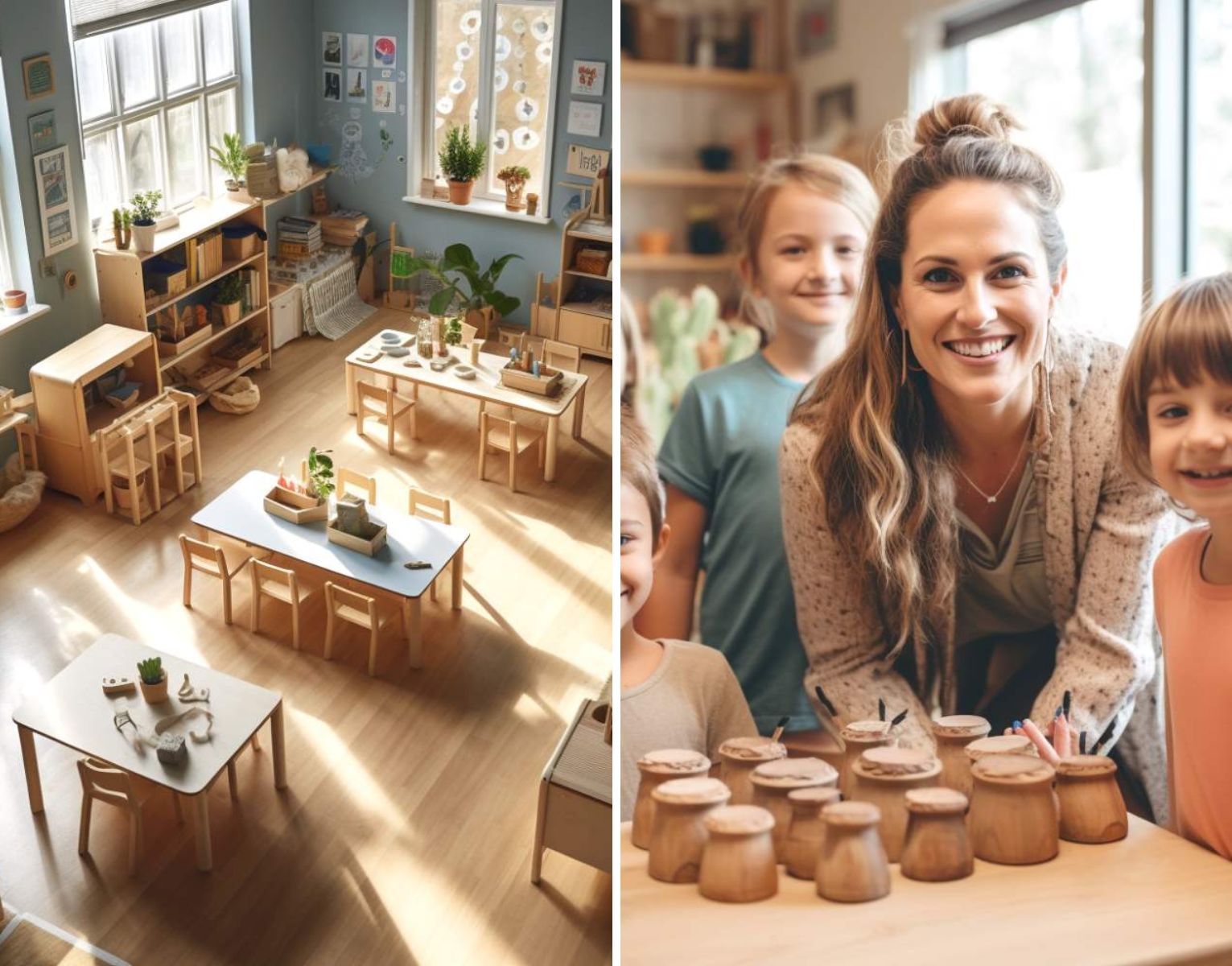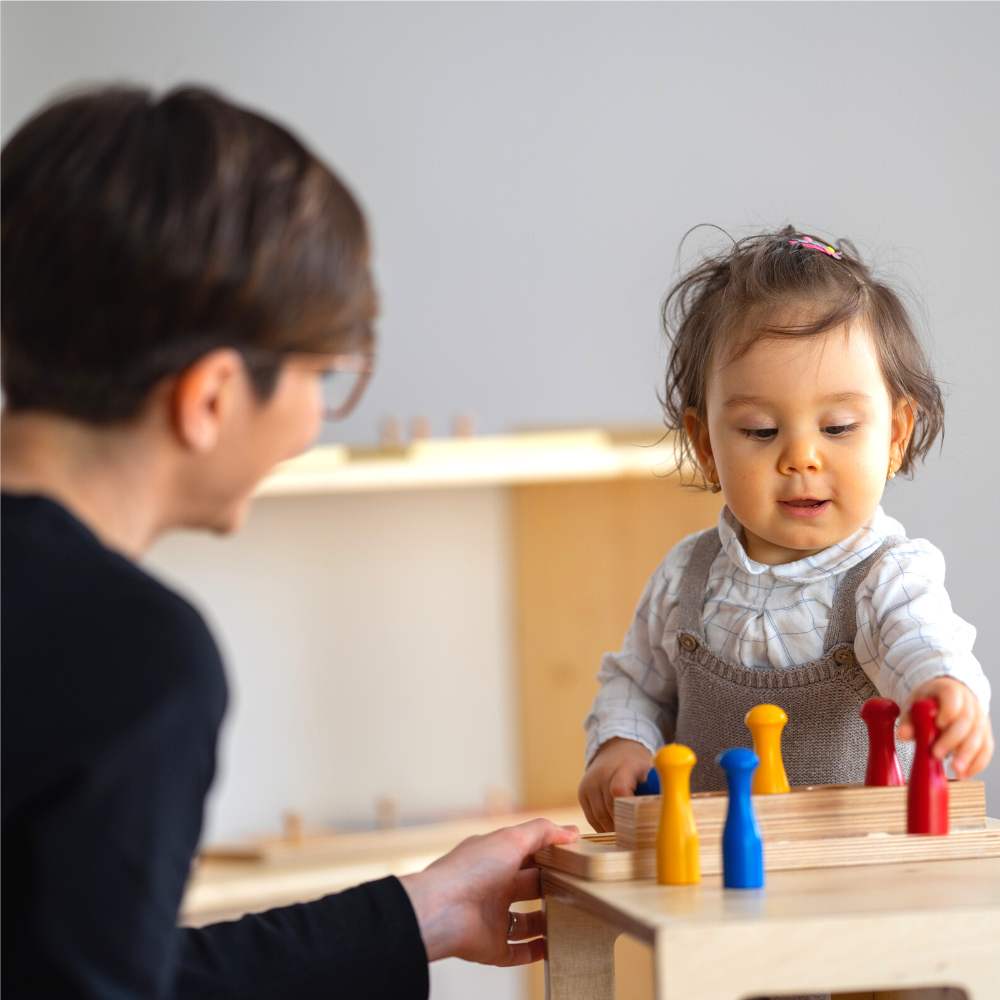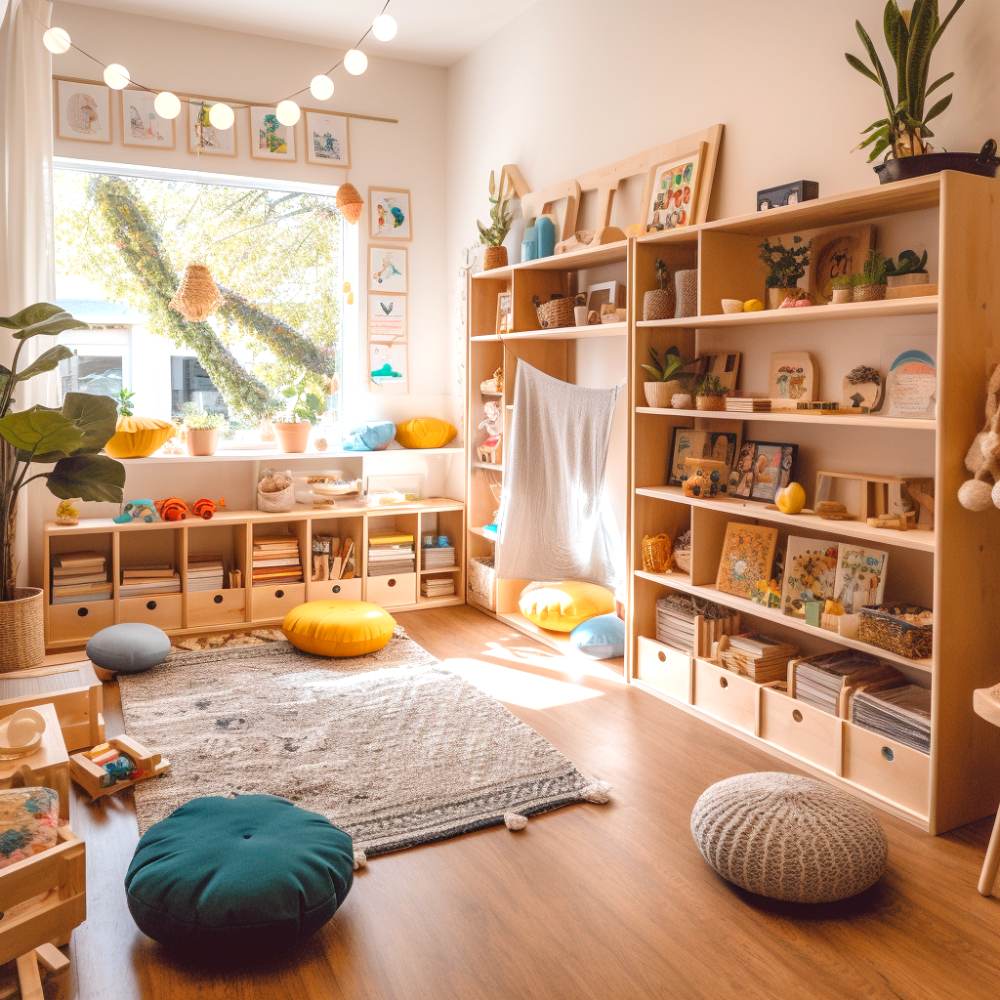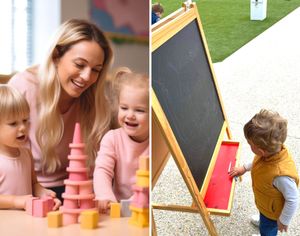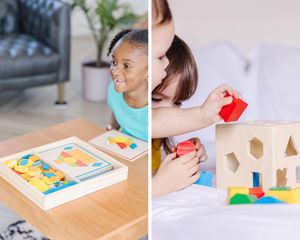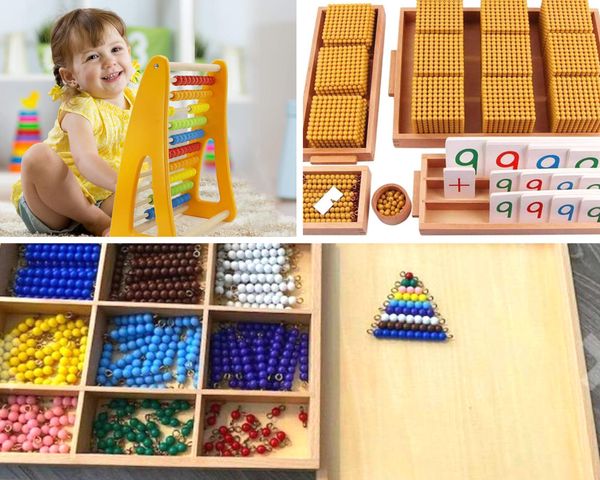Imagine, as a parent, having seen the benefits of the Montessori philosophy in action - perhaps your child attends a Montessori preschool or you've implemented Montessori-inspired activities at home. You've witnessed the joy in your child's eyes when they interact with learning materials, the sense of achievement when they master a new skill independently, and the blossoming of their innate curiosity.
Yet, as they grow, you find that access to Montessori education is either scarce or far beyond budget. This could be your reality, just like mine, and that's where Montessori homeschooling emerges as a beacon of hope.
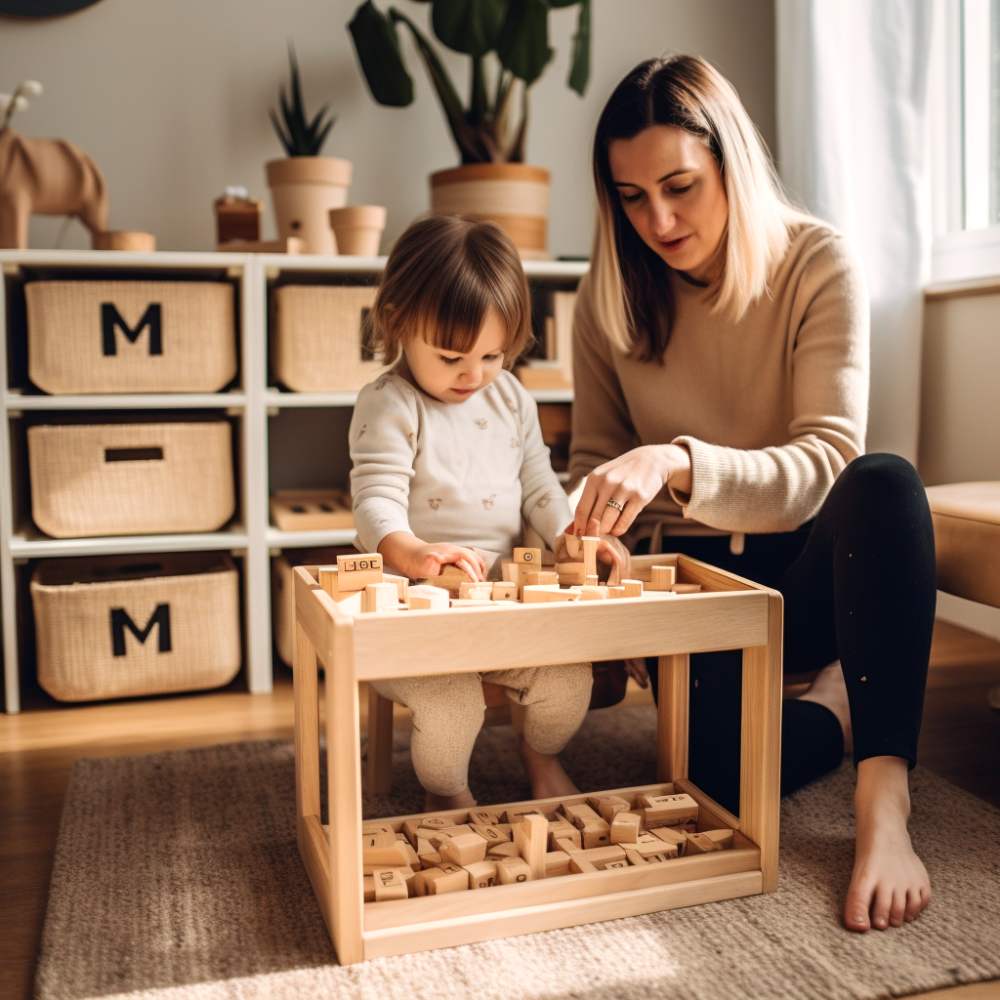
In the role of captain on the exciting voyage that is parenting, the choice of our children's education is a pivotal one. For parents like us, who have tasted the essence of Montessori and seek to uphold its rich principles, these crossroads lead us towards a unique fusion of Montessori philosophy and homeschooling.
My personal journey began when my firstborn, Christian, started attending a Montessori playgroup. I was so impressed by his progress and the philosophy's principles that we started applying it at home unconsciously.
However, as he grew, it became clear that continuing on this Montessori path was a challenging and costly endeavor - we don't have a Montessori school near us, and the ones further out are not within our budget unfortunately. That's when I seriously began considering Montessori homeschooling as a potential solution.
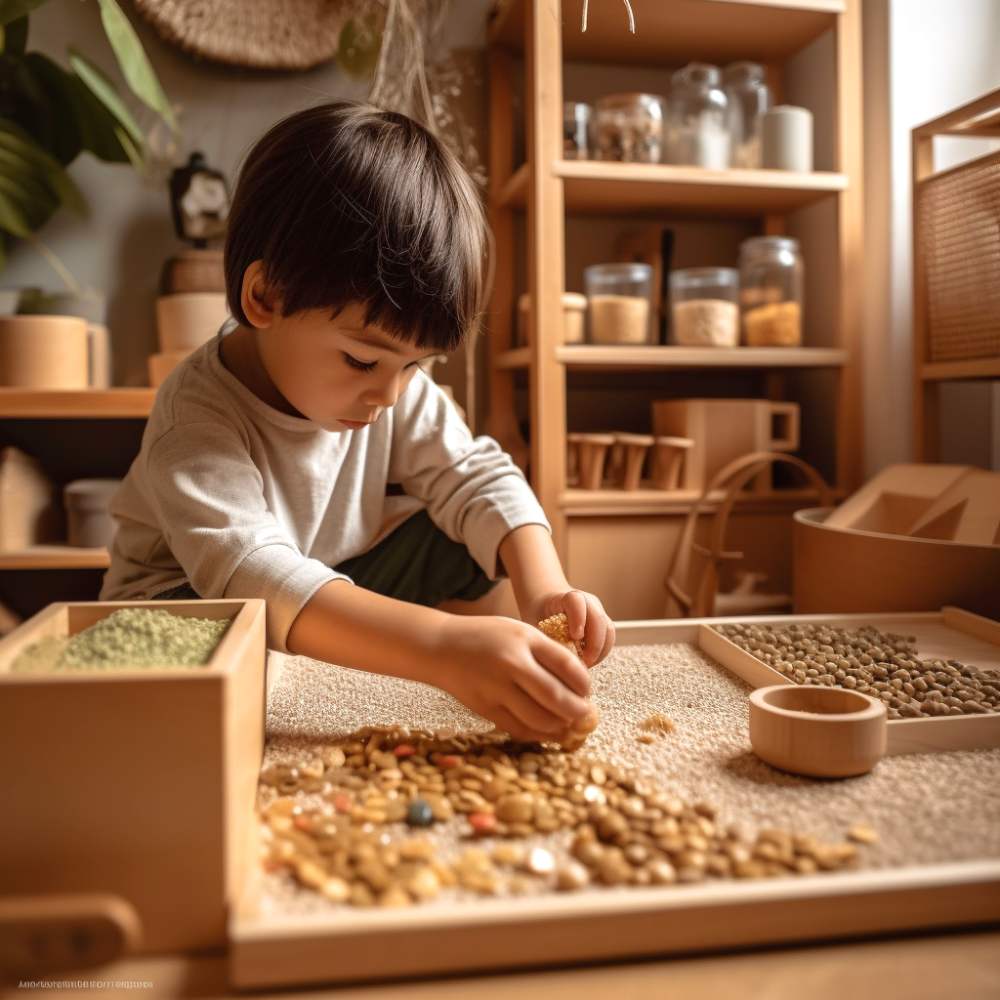
In this article, I aim to share with you the discoveries from my exploration into Montessori homeschooling. Our homeschooling journey is still in its early stages, with only the kindergarten year completed, but we have learnt a lot already, and we're excited about what's to come!
We will delve into:
- The core principles that make Montessori education distinct
- The essentials to establish a Montessori homeschool environment
- Insights into crafting a Montessori homeschool curriculum suitable for various age groups
- A peek into a day in the life of Montessori homeschooling
- Challenges of homeschooling and tips for success to overcome them
- And much more!
With Montessori-style homeschooling, we have the privilege to customize an environment that aligns with our children's individual interests and needs. As parents, we play the role of a facilitator, thoughtfully choosing resources and experiences that harmonize with our children's learning journey.
Though the prospect might seem daunting, there's a wealth of resources available to make this transition smoother and more achievable. I cover these in detail in the section below, but having access to these makes homeschooling less intimidating and more exciting.
Let's get started, shall we?
Understanding Montessori Education
Rooted in over a century of pedagogical insight and child psychology, the Montessori Method provides a robust foundation for an enriching homeschooling journey. Developed by Dr. Maria Montessori, a pioneer in early childhood education, this approach transcends traditional teaching paradigms, placing children's natural curiosity and eagerness to learn at its core.

A Brief History of Montessori Education
In the early 20th century, Dr. Maria Montessori, an Italian physician and educator, began revolutionizing the way we perceive children's learning. Her astute observations of children's innate learning tendencies led her to establish an educational philosophy that aligned with these natural rhythms. Her first Montessori school, established in Rome in 1907, sparked a global pedagogical shift, and today, countless schools worldwide have embraced this enriching teaching methodology.
The Montessori Method Explained
The Montessori method anchors its philosophy in the belief that children are instinctively curious and driven to learn. This approach fosters self-directed learning and autonomy, allowing children to be active participants in their education rather than passive recipients of information.
Within a Montessori setting, the environment is thoughtfully prepared with materials promoting hands-on learning and exploration, catering to various stages of development and enabling children to progress at their own pace.
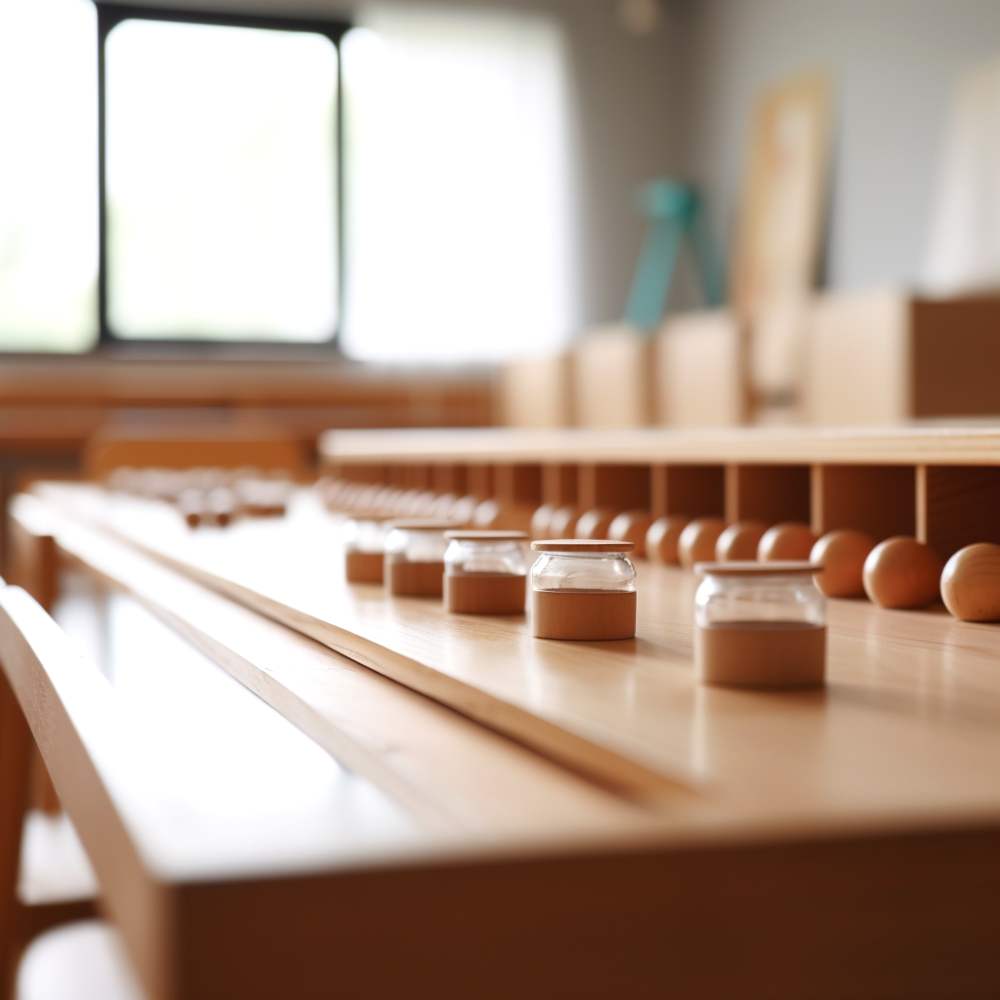
Key elements of the Montessori Method include:
- Individualized learning: Lessons are tailored to each child's unique interests and abilities, allowing them to work at their own pace.
- Hands-on materials: Manipulative materials are available to encourage exploration and active learning.
- Mixed-age classrooms: Children of different ages work together, fostering cooperation, mentorship, and socialization.
Essential Principles of the Montessori Approach
Drilling down further, the Montessori approach rests on several crucial principles that act as guideposts for the learning experience:
- Respect for the Child: Acknowledges children as unique individuals capable of self-directed learning, fostering independence, self-confidence, and responsibility through trust and choice.
- The Absorbent Mind: Refers to children's ability from birth to around six years to effortlessly absorb information from their environment, emphasizing the need for rich, stimulating surroundings.
- Sensitive Periods: Specific developmental windows where children exhibit heightened sensitivity to certain aspects of their environment, allowing for optimal learning when these periods are recognized and capitalized upon.
- The Prepared Environment: A carefully curated space designed to meet children's developmental needs, facilitate independence, and foster a love for learning through purposeful arrangement of materials and activities.
- Autoeducation (Self-Education): The principle that children learn best when they are actively involved in their learning process, facilitated by self-correcting materials allowing for individual growth and learning pace.

Understanding these principles provides a deeper appreciation for Montessori education's unique benefits. As parents venturing into homeschooling, a solid grasp of these principles is vital - especially if you don't already having a teaching background.
After all, we're not merely teaching academic content; we're facilitating our children's holistic development.
And for me, this is what makes the Montessori approach a compelling choice, providing a framework that nurtures our children's curiosity, independence, and love for learning, no matter the setting - be it a classroom, or our homes. Check out our in-depth guide on the Montessori philosophy for more detail on this topic.
Setting Up a Montessori Homeschooling Environment
Creating a Montessori-Style Room
As mentioned earlier, my intention to embark on the homeschooling journey has led me to delve into the specifics of setting up a Montessori learning environment in our home. Through thorough research and careful consideration, my wife and I are in the process of designing a child-centered space that fosters independence and self-directed learning.
This involves creating an accessible and age-appropriate environment with thoughtfully chosen furnishings and shelving. By sharing these insights and experiences, I aim to provide you with practical guidance as you navigate the process of setting up your own homeschooling environment. The purpose of this environment is to stimulate creativity, independence, and self-guided learning.
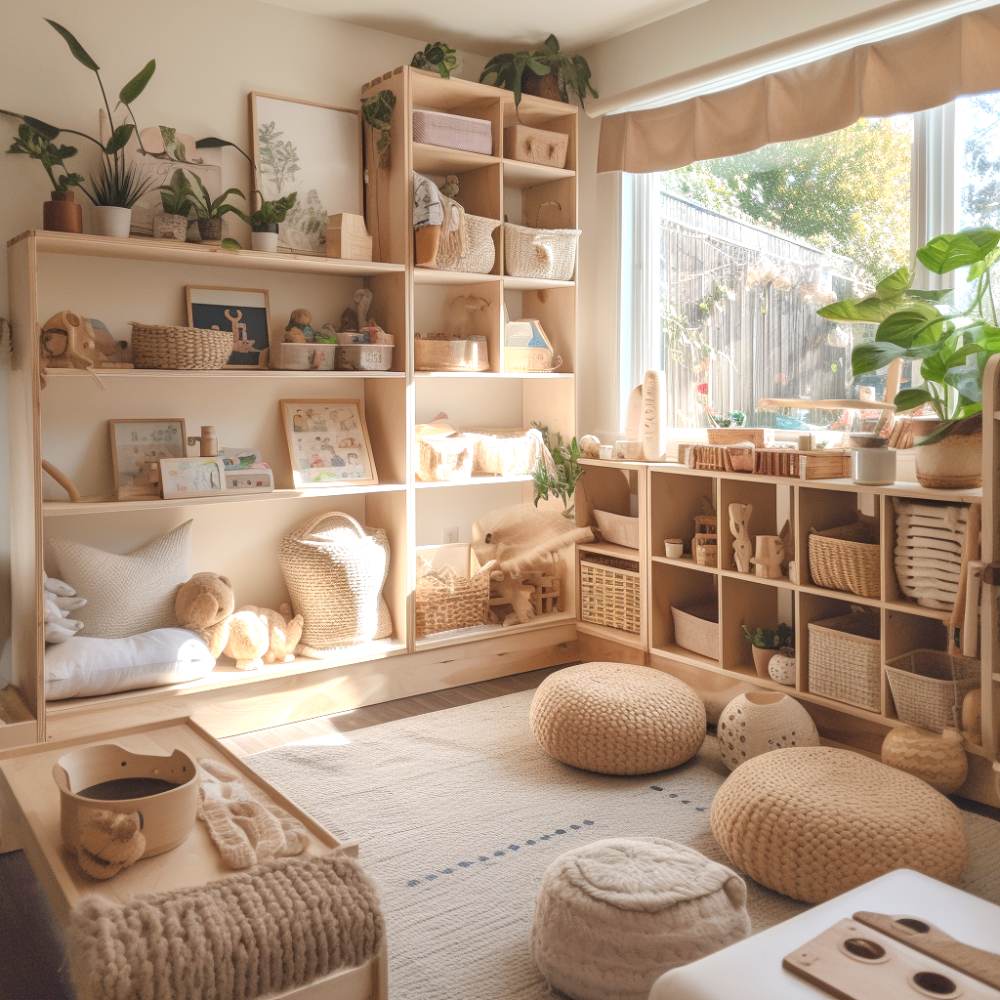
Here is a basic structure you should look to consider:
- Designated Learning Areas: It's important to segment the room into different zones each dedicated to a specific learning area such as language, mathematics, sensorial, and practical life.
- Incorporation of Natural Elements: To mimic the sensory experience of a traditional Montessori classroom, natural elements like wood, fabric, and plants should be integrated into the homeschooling environment.
- Adoption of Minimalism: Keeping the learning space organized and free from unnecessary clutter is crucial. This not only allows easy navigation but also minimizes potential distractions, promoting a more focused and effective learning process.
Choosing Appropriate Montessori Materials
One of the most critical aspects in setting up a Montessori homeschooling environment is the careful selection of Montessori materials. Research suggests that a homeschooling parent should focus on quality, variety, and scalability when choosing these materials for Montessori lessons.
- Quality: Prioritize durable, well-crafted materials that can endure repeated use over time.
- Variety: It's essential to provide a range of materials that span all key curriculum areas, including language, math, sensorial activities, and practical life lessons.
- Scalability: Homeschooling parents should consider materials that can adapt with their child's growth, thus ensuring continued relevance and challenge as the child's learning advances.
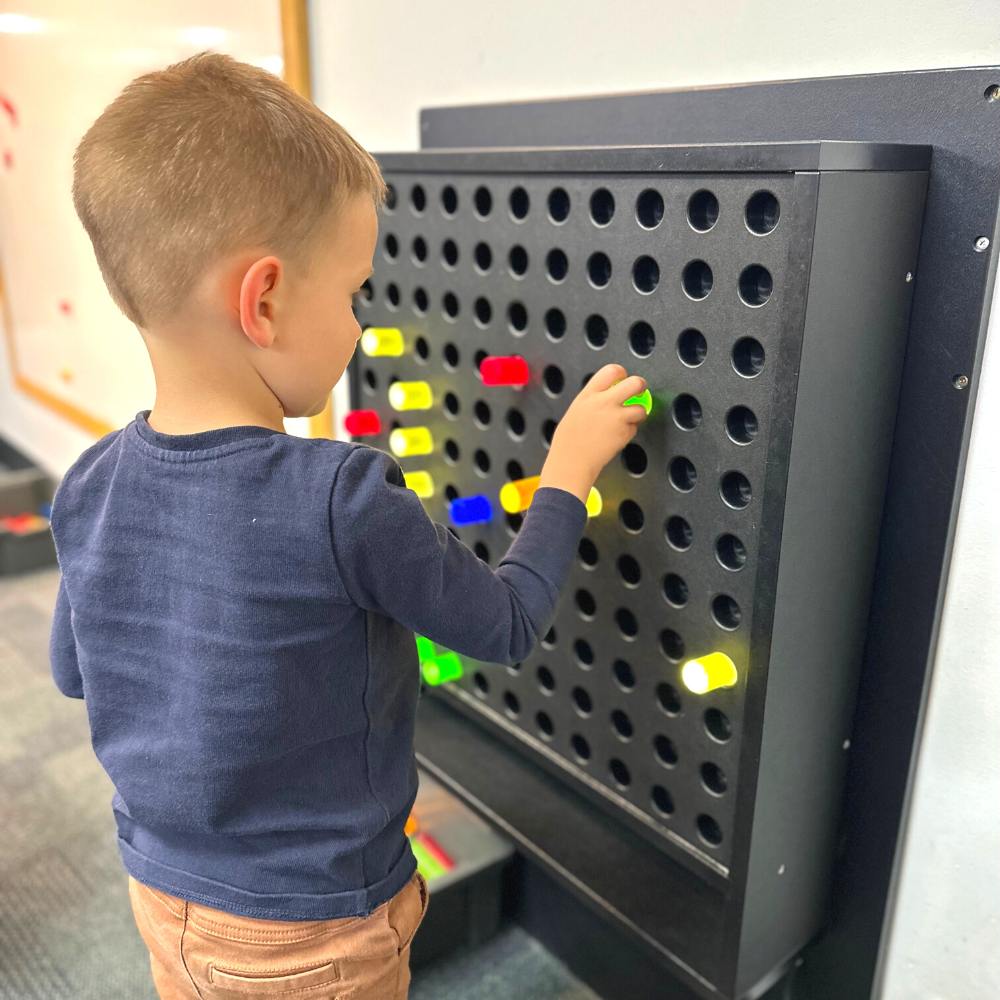
Blending Technology with the Montessori Approach
This can be a point of contention, not just in Montessori circles, but with parents in general. I'm a big fan of limiting kids to technology (that's a story for another day), but it can have its place if used wisely.
Technology can play a significant role in augmenting individualized learning and creative exploration in a Montessori homeschool environment. Here are a few strategies worth considering:
- Educational Tools: Digital resources compatible with Montessori principles, such as self-guided learning, exploration, and hands-on engagement can be effective learning tools.
- Balanced Approach: While embracing technology is important, it's equally crucial to strike a balance between digital resources and traditional Montessori materials and activities.
- Online Safety: Safety is paramount when utilizing digital tools, hence enforcing strict parental controls and maintaining an ongoing dialogue with your child about responsible internet usage is crucial.
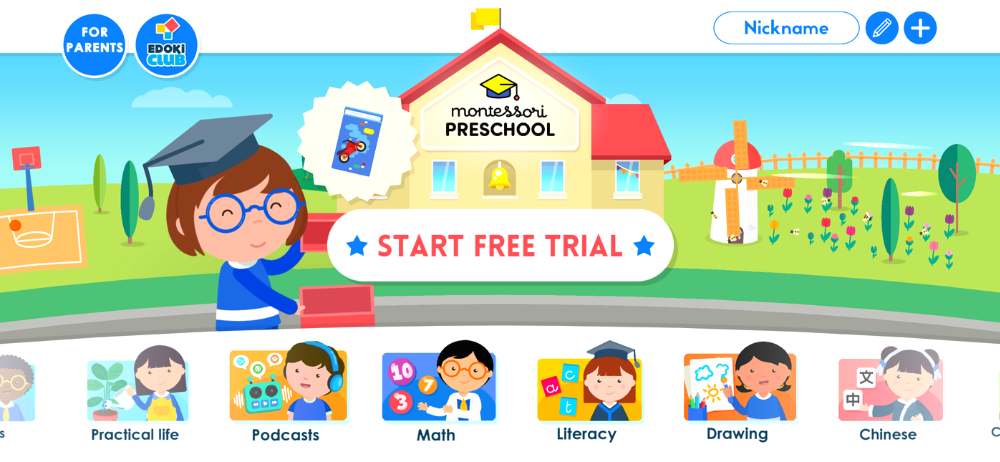
Creating a Montessori homeschooling environment requires careful planning and mindful implementation. The goal is to foster a positive, supportive atmosphere that caters to your child's unique learning needs. You might find my articles on Montessori at home guide, the Montessori bookshelf and best Montessori books beneficial as you navigate this enriching journey.
Developing a Montessori Homeschooling Curriculum
Building upon the foundation of creating an optimal Montessori homeschooling environment, the next crucial step is developing a well-crafted curriculum that aligns with the Montessori approach for each stage of your child's growth. In this section, I will take you through how to design a comprehensive Montessori curriculum specifically tailored to the Infancy and Toddler Years, Preschool Years, and Elementary Years.
By implementing these insights, homeschooling parents can create a dynamic and engaging learning journey that fosters their child's development and nurtures a lifelong love for learning.
Here are some specifics to focus on for each age group:
Infancy and Toddler Years
- Create a nurturing environment that supports individual growth and development.
- Provide sensory-based materials and activities to stimulate the senses.
- Foster motor, cognitive, and social-emotional development.
- Incorporate sensorial activities, practical life exercises, and language development.
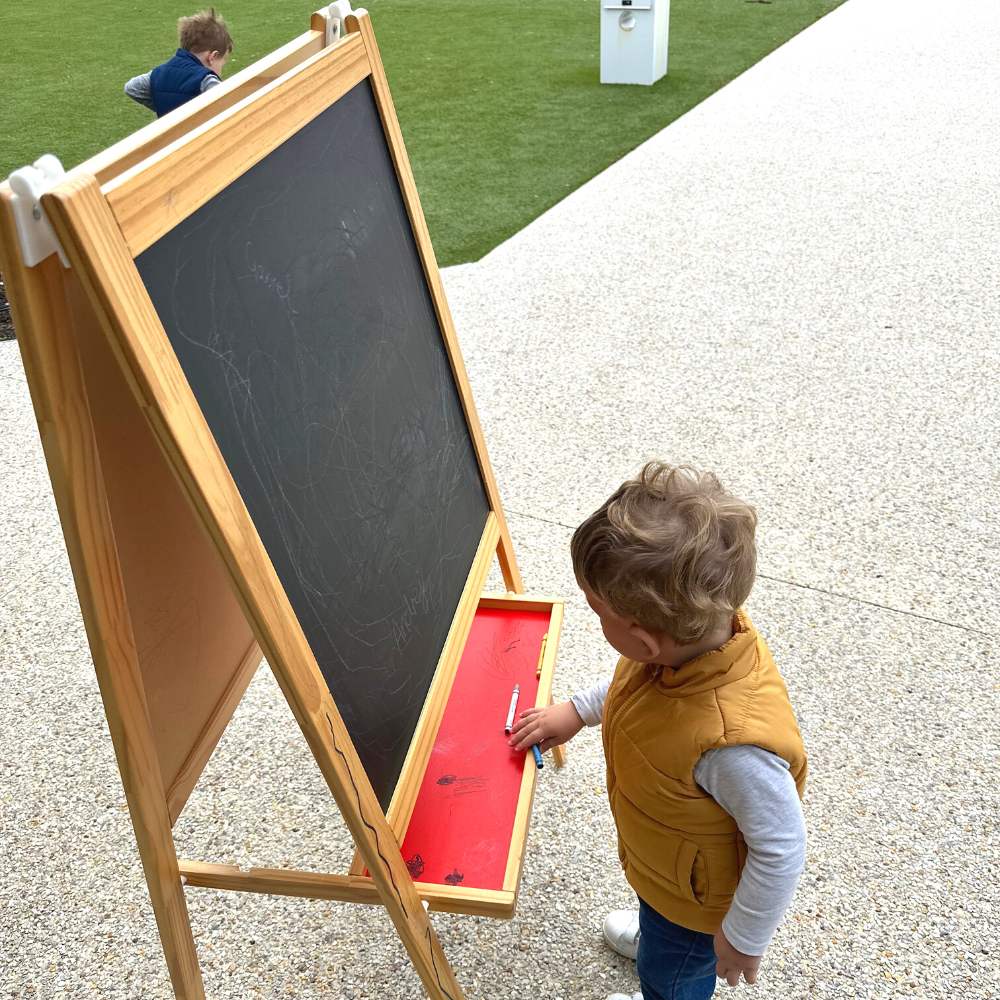
Preschool Years
- Structure the Montessori curriculum as the child becomes more capable of independent learning.
- Emphasize practical life skills and introduce math, language, science, and cultural subjects.
- Integrate unit studies for a holistic approach.
- Include activities like counting and number recognition, letter recognition and handwriting practice, and geography lessons.
Elementary Years
- Expand the Montessori curriculum to include advanced subjects and learning opportunities.
- Utilize a Montessori scope and sequence for an organized progression of concepts.
- Integrate hands-on math materials, reading and writing exercises, science experiments, and cultural studies.
- Provide opportunities for critical thinking, creativity, and cultural exploration.
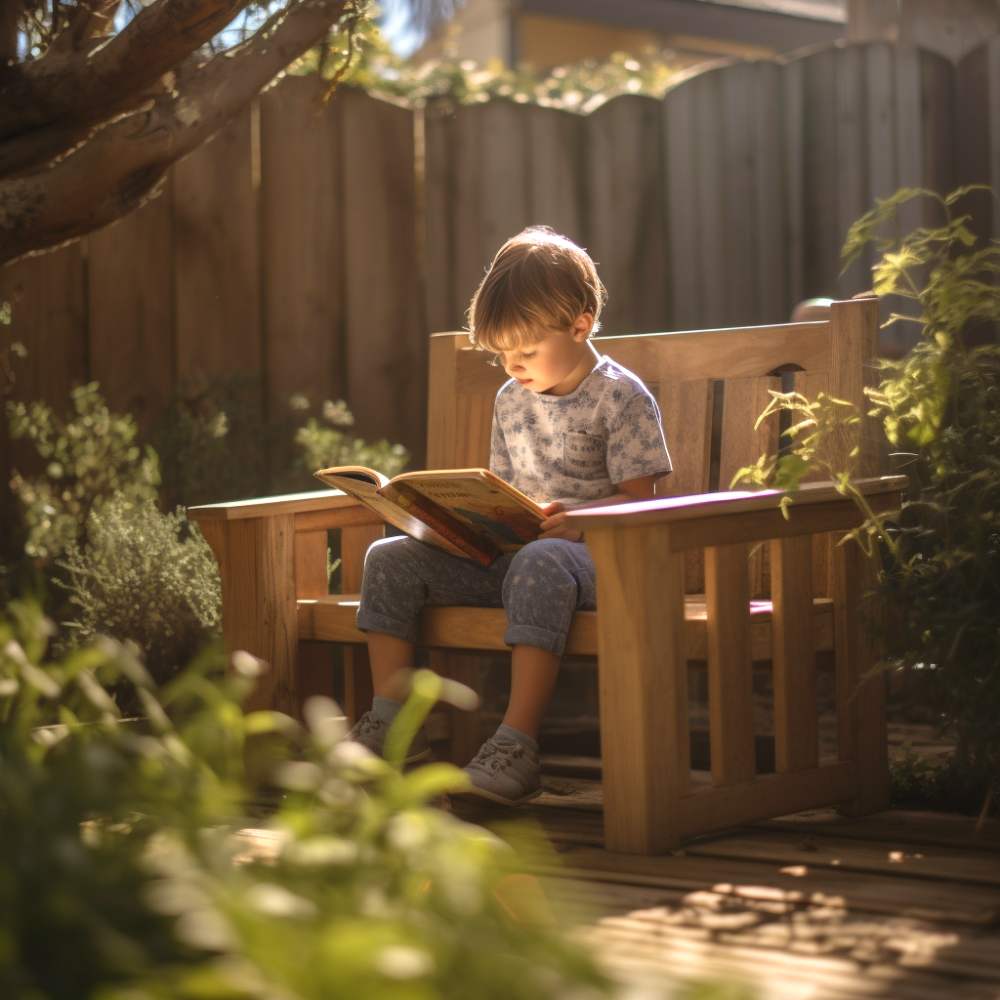
By exploring the principles of individualized learning, practical life skills, and hands-on experiences in a Montessori curriculum, you can create a personalized and engaging educational journey for your children. Admittedly, I am currently on the learning journey myself, so I am drawing inspiration from the experiences and knowledge shared by other homeschooling parents as well as my own research. As you begin to develop your own curriculum, remember to prioritize your child's unique needs and interests, fostering a love for learning that will stay with them throughout their lives.
Teaching and Learning in a Montessori Homeschool
Child-Led Learning
In Montessori elementary education, child-led learning is a fundamental principle in my opinion. Research supports the idea that allowing children to explore their interests and take ownership of their education fosters a genuine love for learning. By providing choices and respecting their decisions, Montessori teachers empower children to become active participants in their own education.
Mixed-Age Classrooms
While it may not always be feasible to replicate traditional mixed-age classrooms in a homeschooling program, there are ways to incorporate the benefits of this approach. Encouraging siblings or homeschooling groups to work together and learn from each other can promote cooperation, collaboration, and peer mentoring, which are valuable skills for life.
Hands-On Learning
Hands-on learning is a key aspect of Montessori education, and it can be effectively implemented in a homeschooling environment. By providing a variety of Montessori materials and tools, homeschooling parents can create opportunities for children to learn through exploration and manipulation. These materials not only enhance conceptual understanding but also develop fine motor skills and engage multiple senses.
Life Skills and Practical Experiences
In addition to academic knowledge, Montessori education emphasizes the importance of practical life experiences and life skills. Homeschooling parents can integrate activities such as cooking, cleaning, and social interactions into their curriculum. By engaging children in real-life situations, they learn responsibility, independence, and problem-solving skills that are essential for their overall development.
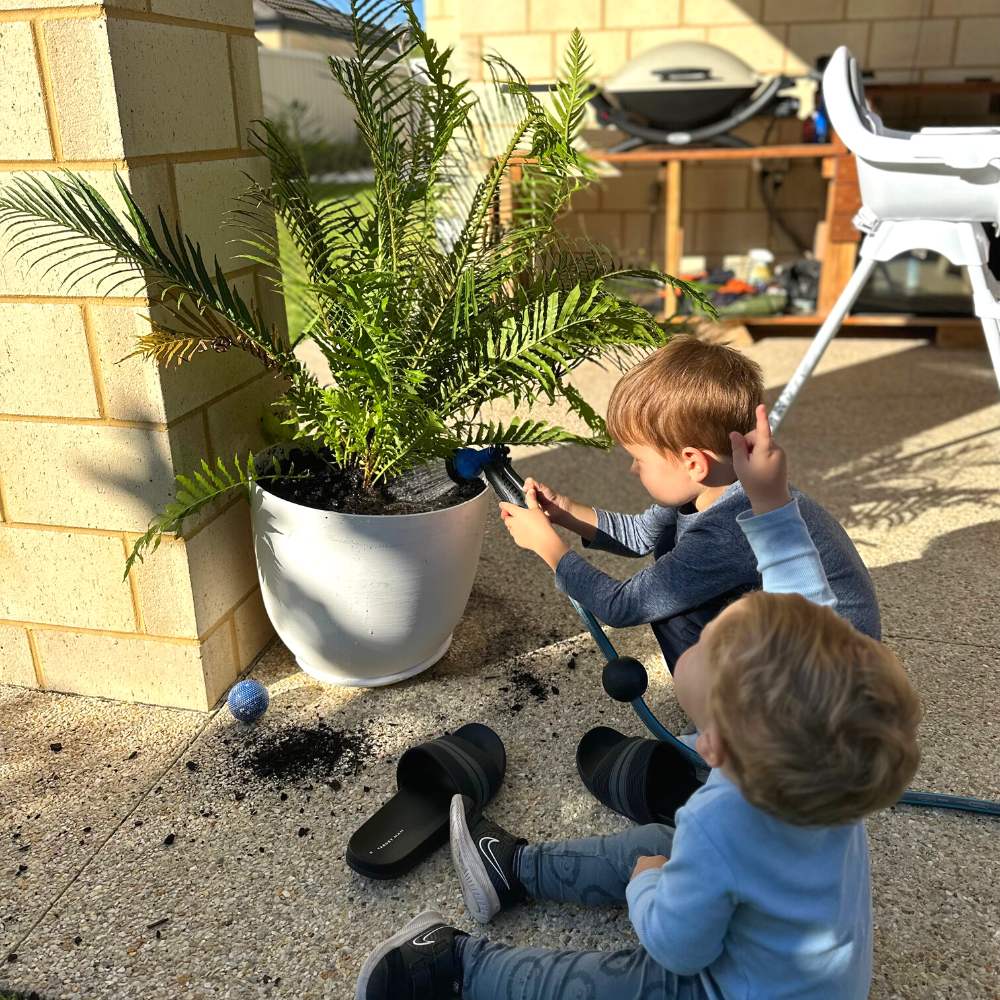
Socialization and Assessment
Concerns about socialization in homeschooling can be addressed through various opportunities for children to interact with others. Participating in homeschool groups, joining community events, and going on field trips provide avenues for social interaction and skill development.
Assessments in a Montessori homeschooling setting can be based on anecdotal observations, progress charts, and subtle evaluations rather than traditional grading systems. This approach focuses on personal growth and development rather than competition.
Subject-Specific Strategies
Language Arts
In the realm of language arts, the Montessori method emphasizes the integration of reading and writing. A phonetic approach serves as a starting point, enabling children to learn letter sounds through tactile manipulation of letter tiles or cards.
As they progress, the introduction of more complex words and sentences is facilitated by vibrant materials such as language cards and puzzles. Engaging children in storytime not only models fluent reading but also immerses them in the world of literature.
Mathematics
Montessori mathematics materials provide a concrete understanding of mathematical concepts. Beginning with basic counting, hands-on materials like number rods or bead bars help children grasp numerical concepts.
As they advance, more intricate arithmetic tasks can be introduced, incorporating materials such as the golden beads for operations involving larger numbers. This physical engagement fosters a solid foundation for abstract reasoning later on.
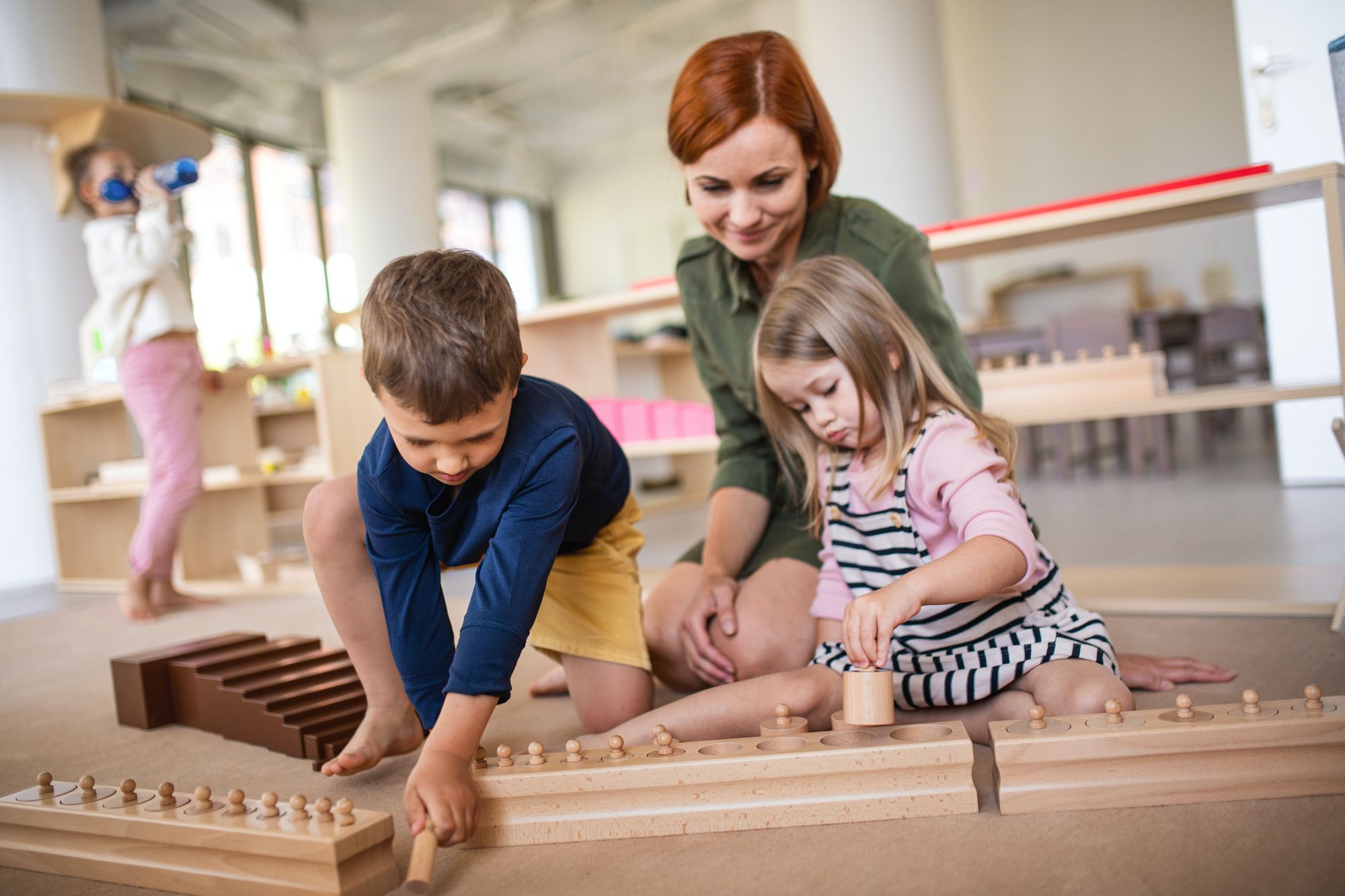
Science
Montessori science education nurtures curiosity and observational skills. Encouraging children to embark on nature walks promotes discovery, inquiry, and record-keeping. The utilization of Montessori botany and zoology puzzle materials aids in teaching about plants and animals through hands-on exploration, fostering a deeper understanding of the natural world.
History
Incorporating Montessori principles into history lessons involves the use of visual aids and timelines, allowing children to grasp the broader historical context. These materials facilitate the study of significant events and individuals, guiding children toward understanding essential historical connections. Storytelling serves as an engaging and relatable approach to make history come alive for children, enriching their appreciation and comprehension of the subject.
Art
Montessori's emphasis on a prepared environment extends to art instruction. By creating accessible art stations with a wide array of tools, children are encouraged to explore and express their creativity. The freedom to experiment with various artistic mediums such as drawing, painting, and sculpting contributes to their artistic development. This process cultivates a lifelong love and appreciation for the arts.

Through the implementation of subject-specific strategies, you can create a stimulating and enriching educational environment for your own children, drawing inspiration from the Montessori approach.
Resources for Montessori Homeschooling
Books and Ebooks
When embarking on your Montessori homeschooling journey, books and ebooks are valuable resources to start with. Explore authors like Maria Montessori, Tim Seldin, Susan Mayclin Stephenson, and Paula Polk Lillard for insights into the Montessori method, educational materials, and lesson plans. Keep an eye out for my article review of some of the more popular books.
DIY Montessori Materials
Creating your own Montessori materials can be a cost-effective and fulfilling approach - and it is a serious passion of mine! Consider making sandpaper letters, spindle boxes using small objects and a segmented box, and crafting geometric solids from foam or clay.
If you're stuck for ideas, I planning to launch a DIY Montessori series as part of this blog (and will be captured on my Tik Tok, Youtube and Instagram channels) where I will take you on a DIY journey and you can see how easy it is to get the most out of Montessori on a budget, while still maximising the experience for your child (trust me, they will find an empty bottle interesting, you don't need to spend too much money)
Online Curriculum and Resources
A wealth of online resources cater to Montessori homeschooling. Check out the Montessori Homeschool Curriculum by Multisori offering curricula for preschool, kindergarten, and first-grade levels. We've used some of their products when we homeschoold Christian, and it is amazing stuff!
Additionally, the Montessori for Homeschoolers website is another great resource and it provides math and reading workbooks aligned with the Montessori approach.
Field Trips and Life Experiences
Enrich your child's education with field trips and life experiences. Visit local museums, zoos, botanical gardens, and engage in nature walks or hikes at nearby parks. These real-life connections foster a love for learning beyond the home environment.
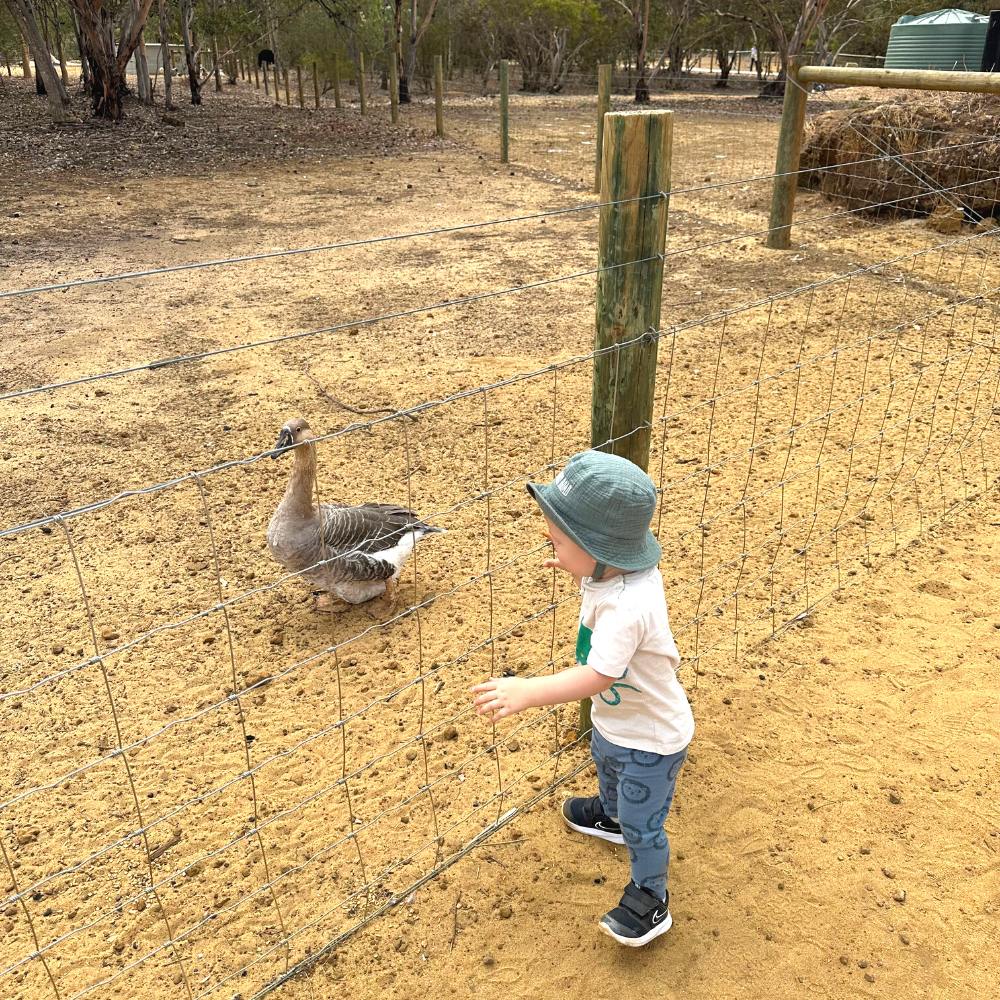
Educational Toys
Include educational toys that align with Montessori principles in your homeschooling. Look for wooden puzzles with large knobs, stacking boxes and towers and nesting cups for size and spatial relationships, and lacing strings and beads to enhance hand-eye coordination.
So if you're considering homeschooling and you're feeling a little overwhelmed on where to start (understandable), there are a wide range of resources, from books to DIY materials, online curricula, field trips, and educational toys, can support your Montessori homeschooling journey. By utilizing these tools, you can create a rich and rewarding learning environment for your child.
To make you feel even better, this only the introductory piece in my journey to help you (and myself) paint the road for your child's true north. This is only the beginning.
The Rewards and Hurdles of Implementing Montessori Homeschooling
The application of Montessori principles within a homeschooling environment can significantly impact a child's educational development. This approach promotes various benefits such as fostering independence, instilling self-discipline, and creating a joyful learning environment. However, to attain optimal outcomes, one must effectively navigate the challenges associated with this method.
The Benefits
Montessori homeschooling is laden with benefits that can reshape a child's educational journey.
- Promotes Independence: Children have the freedom to choose their activities and learn at their own pace. This cultivates their problem-solving skills and ensures that you, as the parent, have full control over their learning.
- Enhances Self-discipline: As children take charge of their learning, their self-discipline tends to improve. This leads to more engaged and responsible learning behavior.
- Fosters Joy: The Montessori homeschooling experience encourages children to explore their interests without the pressure of peer comparisons. This fosters a personalized, enjoyable educational journey that taps into their natural curiosity.
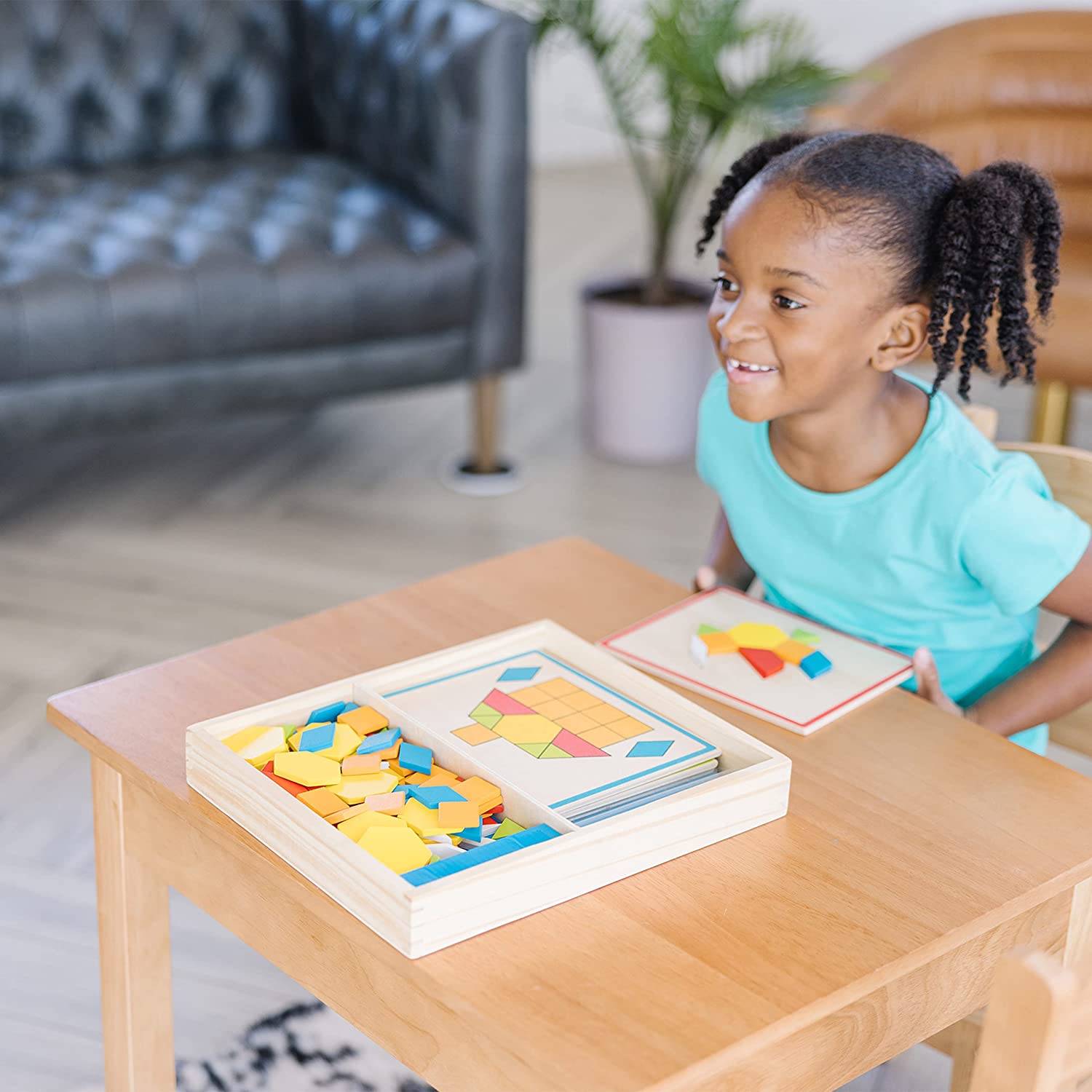
Facing the Challenges of Montessori Homeschooling
Like any worthwhile endeavor, Montessori homeschooling comes with its challenges. Here are some key points to consider:
- Costs: Acquiring high-quality learning materials can be expensive, and transitioning to the Montessori ethos requires patience and adaptability.
- Risk of Burnout: Particularly when homeschooling a kindergarten-aged child, balancing educational needs with personal well-being can lead to parental burnout. Many parents, ourselves included, have grappled with this.
How to Overcome These Challenges
Successfully navigating these hurdles calls for strategic planning and thoughtful execution:
- Addressing Costs: Consider seeking affordable Montessori resources or creating some using available materials. Joining local Montessori homeschooling communities can also provide opportunities for sharing materials and ideas.
- Preventing Burnout: Maintain a strong self-care regimen. In our experience, setting aside personal time for relaxation and rejuvenation was crucial for sustaining emotional well-being and a positive homeschooling environment.
Montessori homeschooling is a uniquely powerful approach to education. Embrace the challenges, harness the benefits, and remember to manage your expectations - success is within reach for both you and your little ones.
Montessori Homeschooling: A Day in the Life
After exploring the rewards, hurdles, and strategies of implementing Montessori homeschooling, it's time to delve into the real-life execution of this approach. Let's take a journey through a typical day in the life of a Montessori homeschool parent to better understand how these principles manifest in daily routines and activities.
This is based on a discussion I had with a fellow Montessori parent who is homeschooling her kids. Hope you enjoy it!
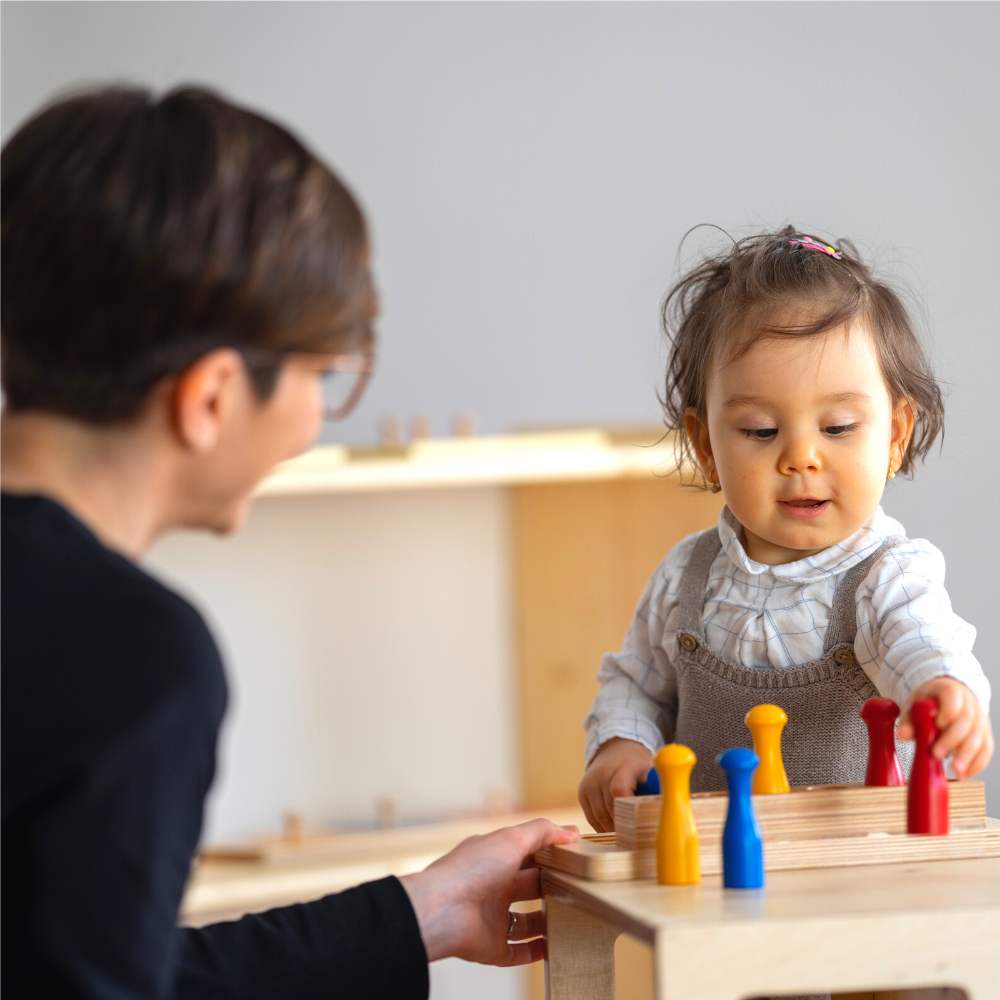
The sun has barely crested the horizon when my day as a Montessori homeschool parent begins. The first task, after a soothing cup of tea, involves setting up the Montessori-aligned learning environment for the day. The variety of activities are arranged with careful attention to detail; from tactile number games to vibrant flashcards. Each activity is designed to spark curiosity and accommodate the natural rhythm of my child's learning process.
As the day progresses, the home buzzes with the energy of discovery. My role as the parent is more of a gentle guide, observing, and stepping in only when asked or when it’s necessary to provide direction or demonstrate a task. The flexibility of the Montessori at home approach means we take regular breaks, interspersing learning with play, and ensuring the process remains child-driven rather than adult-led. Time is not our taskmaster; instead, learning flows naturally, much like the quiet brook we often visit on our field walks.
Our midday pause provides a moment of respite, allowing us to reconnect over a homemade meal. It also offers an opportunity to reinforce practical life skills. My child takes the lead in simple kitchen tasks, learning to peel vegetables or set the table. Following lunch, we venture outdoors for our field walk, observing the changing seasons, spotting wildlife, and collecting natural materials for art projects. This reinforces the Montessori ethos of experiential learning, connecting with the world outside textbooks.
As the day draws to a close, we reflect upon the discoveries made, the skills learned, and the joy shared. The beauty of Montessori homeschooling lies not just in its focus on academic growth, but also in fostering personal connections and a love for lifelong learning. Our days may seem different from a traditional school routine, but it's this flexibility and connection that make it so rewarding.
This is just a glimpse. Stay tuned for a future blog post where I will delve into more details using the same theme of "day in the life of", showcasing the myriad ways each day can be uniquely enriching.
Tips for Success in Montessori Homeschooling
As we navigate the intricate path of Montessori homeschooling, it's essential to arm ourselves with the right strategies to make this educational voyage rewarding for both us and our children.
Drawing from my brief personal experience with kindergarten, and the wealth of knowledge shared in this article, here are some invaluable tips to guide your journey toward true north success:
- Remember to trust in the journey and follow your instincts: Montessori education thrives on the principle of child-led learning. Embrace this philosophy, allowing it to guide your homeschooling endeavors. If something seems amiss, have the confidence to make adjustments, remembering to respect and trust in your child's learning path. Just as we've learned to navigate the challenges of Montessori homeschooling, you too will grow into your role as a Montessori teacher at home.
- Embrace imperfection and focus on the broader picture: Perfection is not the goal here, nor is it a defining trait of Montessori schools. Rather than striving for a flawless replication of Montessori principles, concentrate on creating an environment brimming with love and support. My wife and I are by no means experts, we're learning along with you. Just as we discussed the joy of learning through Montessori homeschooling, remember that your primary goal should be to foster an enriching and enjoyable educational experience for your child.
- Invest time in understanding the roots of Montessori: Acquainting yourself with Maria Montessori's work, such as her seminal piece 'The Absorbent Mind', will offer invaluable insights into the Montessori ethos. This deeper understanding will guide you in making informed decisions about your homeschooling practices, enriching your Montessori at home journey. While investing in quality Montessori materials, remember that your investment of time and effort into understanding the Montessori approach is equally important. Check our guide on the Montessori philosophy for further insight.
- Seek companionship on your journey: As with any endeavor, a supportive community can make a world of difference. Engage with other Montessori homeschooling families, sharing experiences and gleaning practical advice. Just as we've shared our day in the life of Montessori homeschooling, your shared experiences will serve as a beacon of guidance for others in the community. My plan with this blog is to create its own community, bringing beginners and experts together to share knowledge and learn, as I understand not everyone will have that support at hand.
- Plan with flexibility in mind: While it's beneficial to have a roadmap for your Montessori homeschooling journey, flexibility is key. Let your child's natural curiosity and interests dictate the pace of learning, even if it strays from the plan. This embodies the essence of the Montessori spirit, promoting self-paced and self-directed learning. Given my engineering and mentoring background, I have had to make adjustments in this area as well so don't be too harsh on yourself throughout this journey. The important bit is that you're doing it.

Let's remember that, at its heart, Montessori is a way of viewing the world. It's about respect, understanding, and love. It's about fostering curiosity and nurturing a lifelong love of learning.
As parents, our role isn't just to teach, but to guide, to inspire, and to support. You are equipped with the knowledge, the passion, and the love to guide your child on their unique learning journey. Trust in that, trust in them, and the rest will follow.
If you liked this more introductory-type post, check out my posts that help build understanding of some of the more general concepts below:
